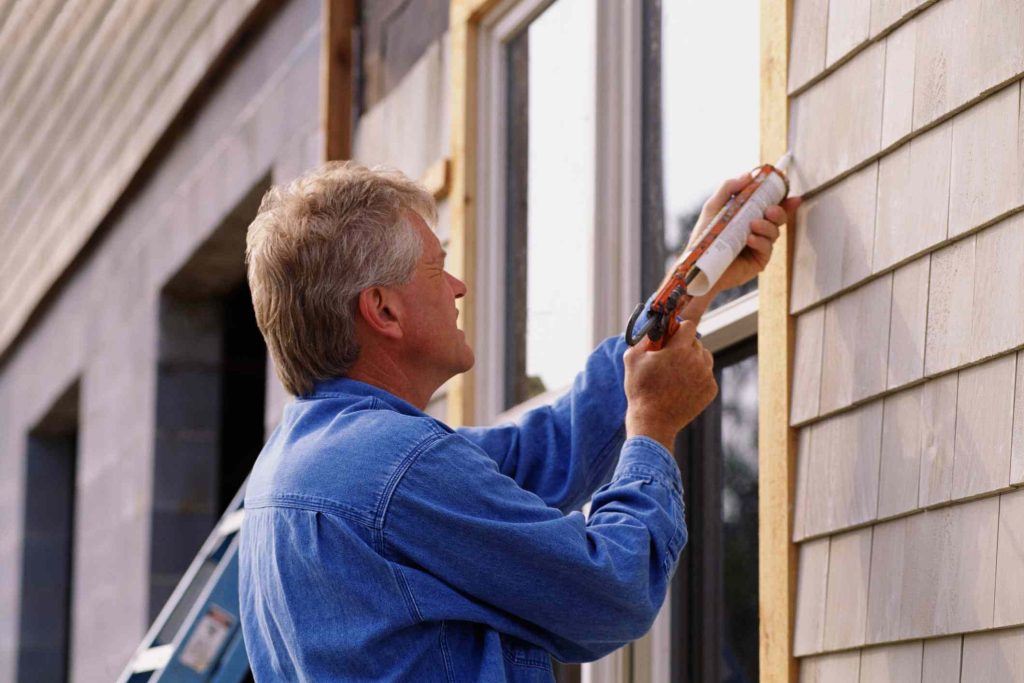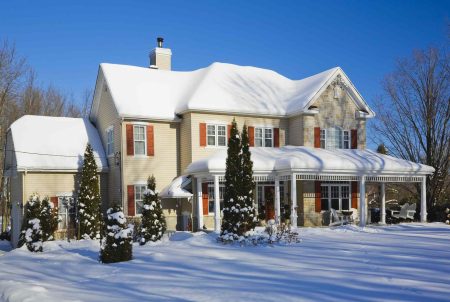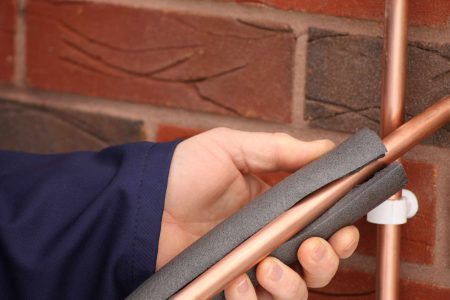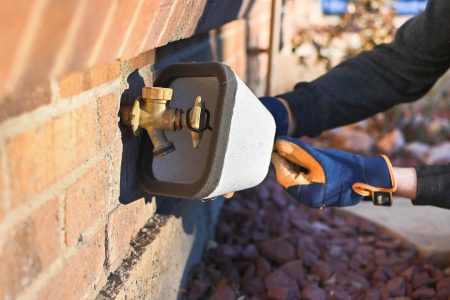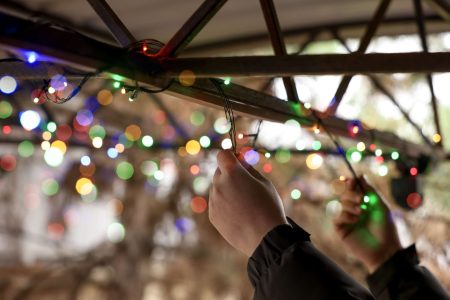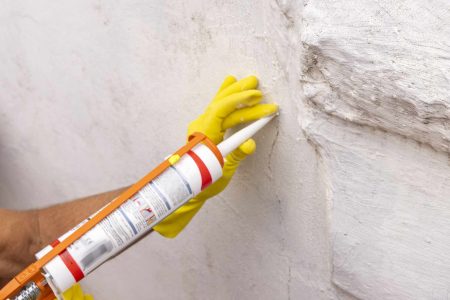The EPA estimates that sealing air gaps in your home will save you an average of 15 percent on energy costs—and possibly much more if you live in an exceptionally hot or cold climate. A home can be very well insulated but still lose a considerable amount of energy through drafty gaps that haven’t been identified and sealed. Considering that sealing these gaps can usually be done for less than $100, you are likely to begin saving money almost immediately—just by addressing some obvious areas where drafts are stealing away your home’s energy.
Here’s how to spot the air leaks in each area of your home—and how to fix them yourself.
What You’ll Need
Equipment / Tools
- Flashlight
- Ladder (if needed)
- Caulk gun
- Screwdriver
Materials
- Exterior-grade caulk
- Flashing (as needed)
- Interior caulk
- Foam gaskets for outlets and switches
- Weatherstripping
- Child-proof plug covers (optional)
- Foil tape
- Expandable spray foam insulation
Instructions
-
Seal the Exterior Air Leaks
Walk around your home and check any spot where two different building materials meet. You’re looking for gaps or cracks that might let air in or out of your home. Some areas to address include:
- Where siding meets a brick chimney
- Where wall framing meets the foundation
- Where siding meets the roof overhang
- Entry points for plumbing, electrical, gas, or ventilation ducts
- Joints around window and door case moldings, sills, and thresholds
- Cracks in foundations
Exterior-grade caulk, expandable spray foam, or flexible rope caulk are good products for filling these gaps. Choose an exterior caulking that allows for movement as wood expands and contracts with the seasons. Where metal flashings are missing, installing them will both stop air leaks and possible water infiltration.
Warning
Some siding materials depend on intentional gaps to allow trapped moisture to escape. For example, you should avoid sealing all gaps at the bottom of vinyl siding or between vinyl siding planks, as this can trap moisture and cause damage to house sheathing. Similarly, brick facing is usually constructed with weep holes that allow trapped moisture to escape. These weep openings should never be sealed up. Consult the technical literature for your siding material to learn proper maintenance.
-
Seal Up the Interior Walls
Install foam gaskets behind all electrical outlets and light switches to minimize airflow between the indoors and outdoors. Consider installing child-proof plug covers on all your unused outlets to keep cold air from coming through the plugs. If you have cable TV or landline telephone outlets in your home, be sure to insulate behind those receptacles, too.
Next check your windows, doors, and baseboards for cracks or gaps where air can get through. Address those with caulk or weatherstripping. If you have window or wall-mounted air conditioners, be sure to check around those, also.
-
Seal the Basement or Crawlspace
Enter the basement or crawlspace to inspect the rim joists and sill plates carefully, and seal any cracks between them and the foundation. Also seal any holes that go through a rim joist or the foundation for hose bibs, electrical work, HVAC vent pipes, dryer vents, gas water heater vents, etc. Caulk or foam spray should be sufficient to address these types of issues.
Check for any holes around ducts, electrical cables, plumbing pipes etc. that run vertically upward to the rest of the house. Fill any gaps you find with caulk or foam. Leaky ductwork is a big air escape route, so check all the ductwork that you can see and easily access. Use foil tape or mastic to seal any leaks that you find.
-
Seal the Attic Space
There are lots of places in the attic where heated and cooled air can escape from lower levels, so it’s important to address each one. While there are things that you can do yourself, this is one area where you may want to bring in a pro. They’ll be able to tell you if your attic is insulated adequately.
Seal around any holes in the attic floor that have been made to accommodate lights, ceiling and vent fans, plumbing stacks, or attic access hatches. You can usually tackle these types of fixes with a can of foam spray insulation. Chimneys and recessed lights need to be handled differently, so don’t insulate those areas with foam.
However, never seal up existing vents penetrating the roof itself or the end gables. Air circulation within the attic space itself is essential to preventing ice dams in regions with freezing winters, and for venting moist humid air from the attic in hot climates.
When to Call a Professional
Many utility companies offer free home energy audits. If yours does, schedule an appointment to have your home checked out by a pro. They’ll probably do what’s known as a blower door test to identify the air leaks in your home. That’s when they depressurize your home to see where the air is escaping. It’s likely to catch issues that you might otherwise miss. If your utility provider doesn’t offer this free service, consider hiring a certified energy auditor to conduct a test for you.
Read the full article here



